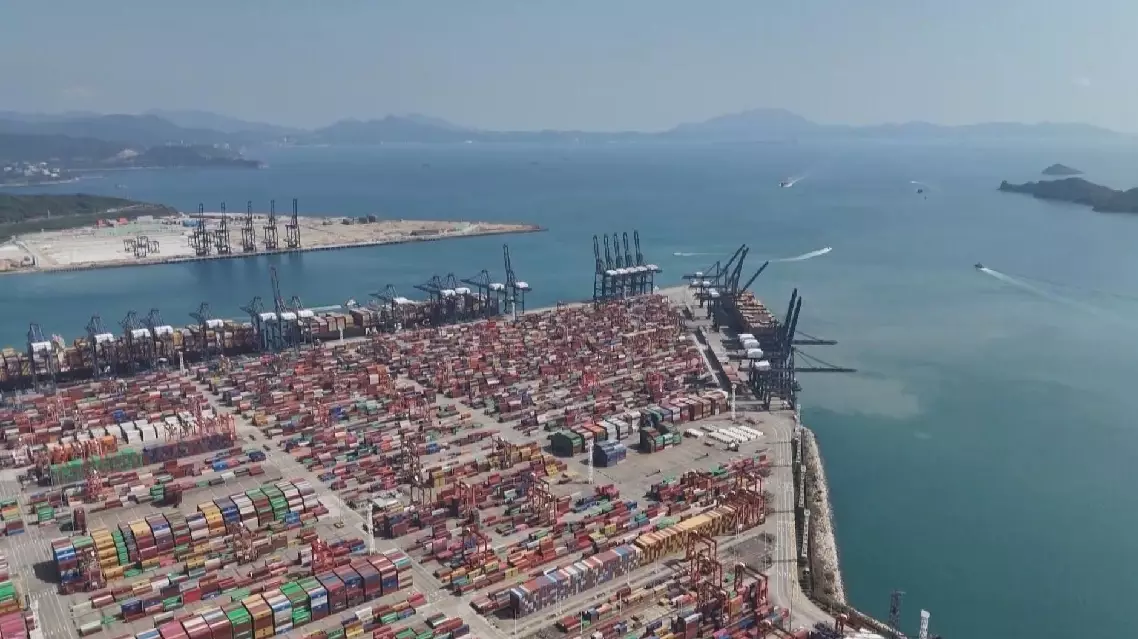The U.S. National Weather Service (NWS) warned on Sunday that lingering dry weather and strong winds in Southern California will hamper firefighting efforts against the devastating disaster which has killed 16.
Extremely dry vegetation, combined with prolonged fire weather conditions, could cause the rapid spread of both new and existing wildfires, further exacerbating instability, the NWS said.
Los Angeles and Ventura counties have issued a red flag warning through Wednesday evening, indicating that local weather conditions could lead to extreme fire risk.
The NWS predicts cooler temperatures, increased humidity, and possibly light rain by next weekend, which could help alleviate fire conditions.
On Sunday, Los Angeles County Sheriff Robert Luna said law enforcement has confirmed 14 deaths and also received 16 reports of missing people in the county, adding the number would differ in other departments' calculation.
A total of 192,000 residents may have to leave at a moment's notice -- with evacuation orders in place for 105,000, and 87,000 in evacuation warning zones.
Data released by the California Department of Forestry and Fire Protection on Sunday showed 105 wildfires of varying sizes were reported across California, sweeping through more than 163 square kilometers.
According to local fire control authorities on Sunday, containment of the deadly Eaton Fire, which has claimed 11 lives so far, has increased from 15 percent to 27 percent.
Meanwhile, the Kenneth Fire is fully contained, and the Hurst Fire has reached 89 percent containment, authorities said.
The Palisades Fire has burned 96 square kilometers from 87 the previous day and remains at 11% containment, according to official release on Sunday.
California Governor Gavin Newsom said in an interview on Sunday that disaster relief efforts will be completed within the next few weeks to assist residents with processing insurance claims. He added that major contracts will be signed to remove debris and manage hazardous materials.

California fires remain unstable as dry, windy weather persists: authority

California fires remain unstable as dry, windy weather persists: authority

California fires remain unstable as dry, windy weather persists: authority
Many Chinese logistics companies are ramping up their shipments for the U.S. market following the latest round of mutual tariff adjustments between China and the United States.
China and the United States announced in Geneva on Monday a series of tariff modification measures aimed at easing trade tensions between the world's two largest economies.
The decision followed a two-day China-U.S. high-level meeting on economic and trade affairs, where both sides recognized the importance of their bilateral economic and trade relationship to both countries and the global economy, a joint statement said, noting that both sides emphasized the need for a sustainable, long-term and mutually beneficial economic and trade relationship.
The latest measures have driven up the businesses of shipping companies in Shenzhen City, in south China's Guangdong Province.
In a freight forwarding company in Shenzhen, the manager said that U.S. clients are experiencing shortages of supplies and are pressuring them to expedite shipments on the next available vessels. The staff members are busy organizing export release documents, with stacks of paperwork for shipments to ports in Los Angeles, New York, and Chicago.
"Since the afternoon of May 12, our shipment volume has increased by 40 percent. By June, it should at least be doubled compared to now," said Fu Shengying, deputy general manager of Guangdong Branch of WorldEx Group.
Fuwei Community in Bao'an District, Shenzhen, is an important hub for cross-border e-commerce logistics. Recent data shows that the average daily export shipment volume here has increased by 14 percent over the past three days compared to May 11.
In another logistics company specializing in cross-border e-commerce, orders from U.S. clients have also surged. According to the company, these clients are facing low inventory and need to restock immediately. Over the past few days, the company has received more orders than during the same period in the previous years.
The company manager noted that the surge in order volume has led to increased demand for container ships. Consequently, some shipping companies are starting to adjust their capacity allocation on a global scale.
"Many shipowners had previously adjusted their capacity, but now that a large volume of cargo is suddenly coming in, there is a shortage of capacity. Consequently, freight rates are rising rapidly. Despite this, many clients are still very eager to ship their goods," said Luo Rong, general manager of Shenzhen Branch of Dewell Group.
Yantian Port in Shenzhen is the busiest shipping hub in South China for routes between China and the United States, handling over a quarter of the country's exports to the United States. To meet the surge in demand from U.S. clients, Yantian Port is now scheduling six daily sailings to the United States.
The port staff said that they have recently received inquiries from several shipping companies and are coordinating berth arrangements and schedules. They are prioritizing vessels for U.S. routes at Yantian Port.
Summer is the traditional Christmas ordering season in the United States, and due to previous export suspensions, American sellers' inventories have been declining and urgently need restocking. As a result, demand for Chinese goods is expected to keep rising in the near future.

Chinese logistics enterprises ramp up shipments after China-US tariff adjustment
























































